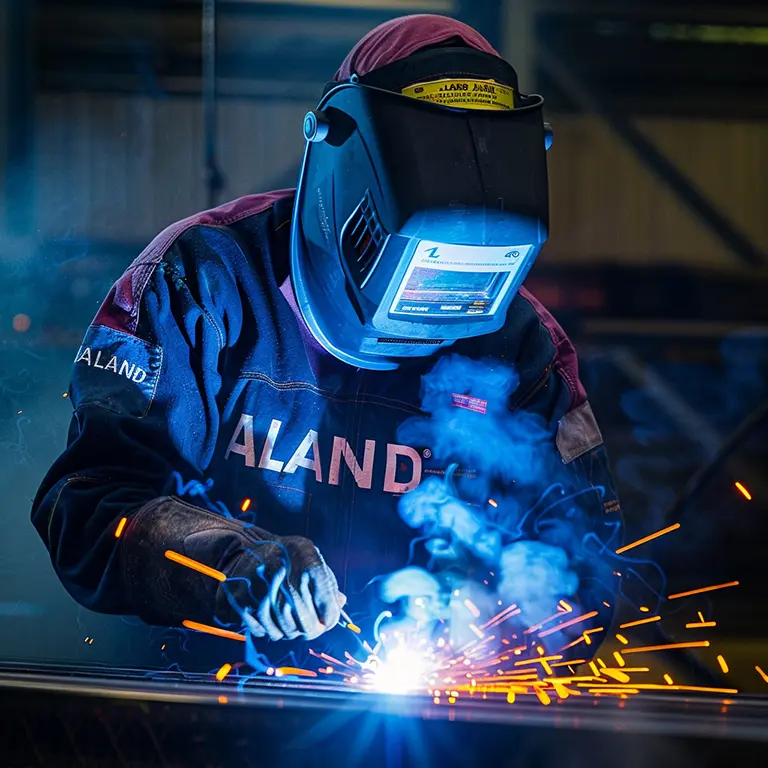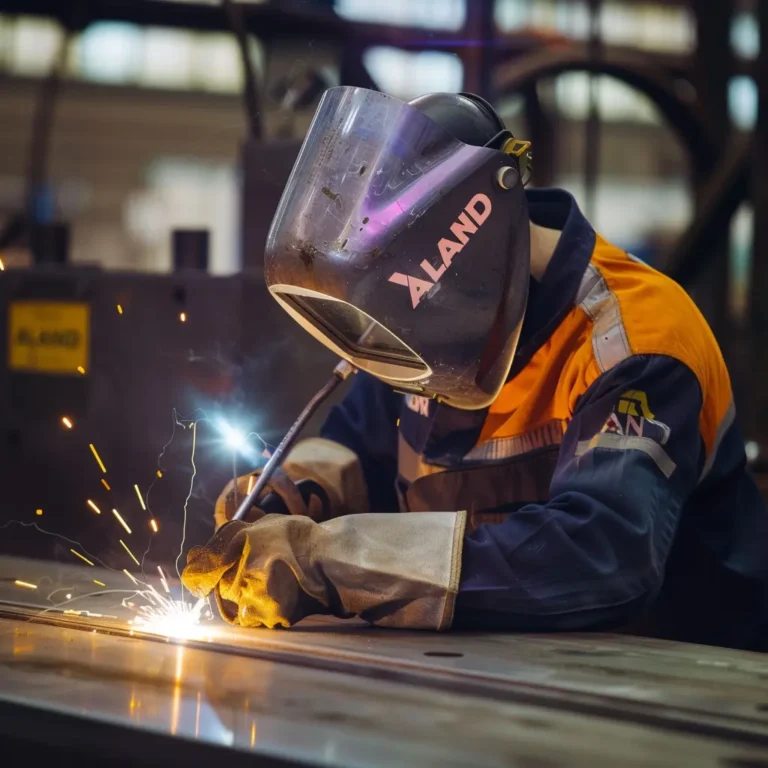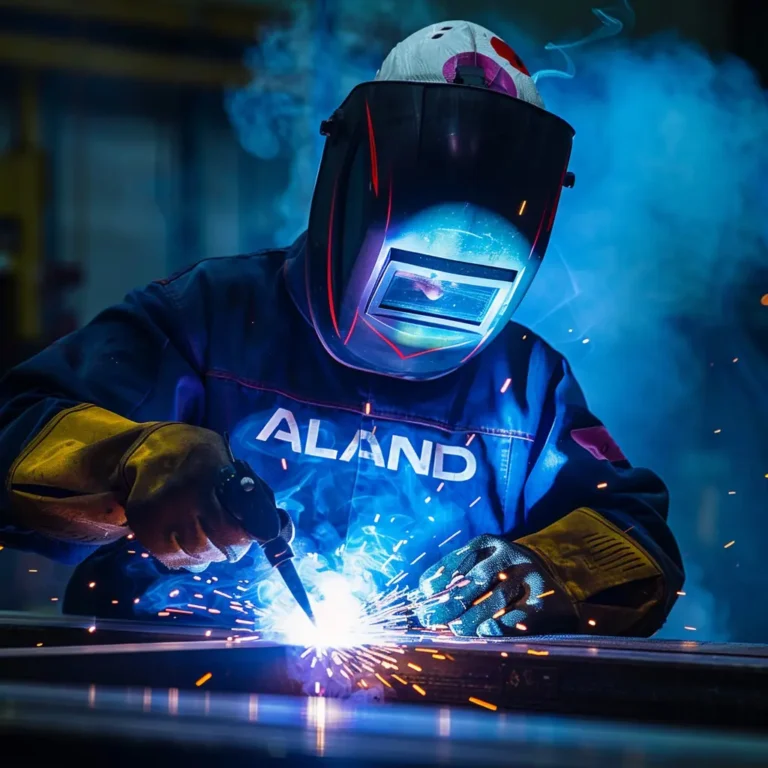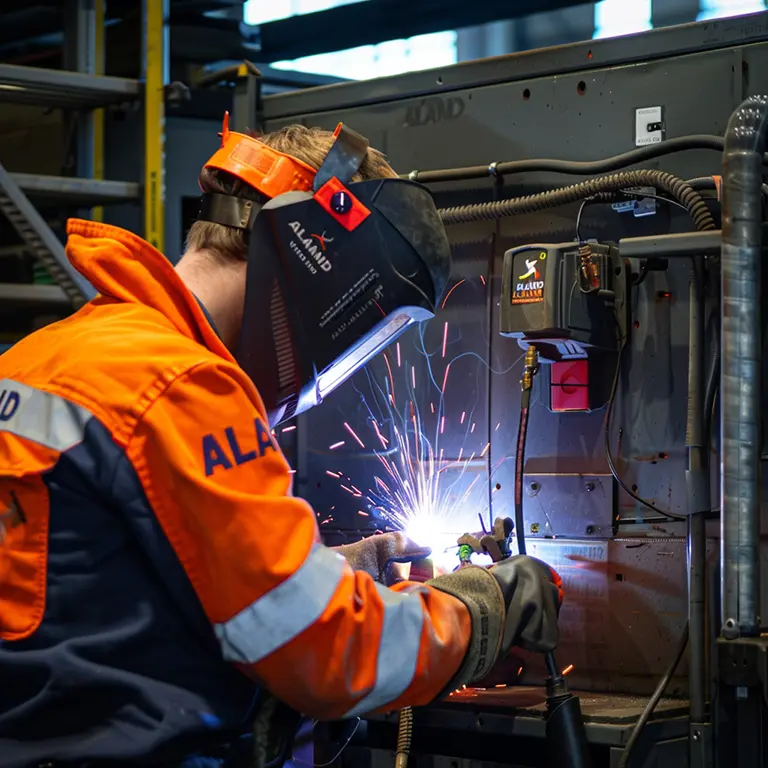Selection and introduction of common welding rods

ALAND WELDING Let you feel the most sincere welding service

Covered electrode is a welding material, also called a welding rod. It usually consists of a metal core and external cladding. The metal core provides the filler material required for welding, while the cladding protects the molten metal from oxidation, contamination, and other external influences during the welding process.
The choice of covered electrode usually depends on the material to be welded, the welding location, the welding process (such as manual arc welding, gas shielded welding, etc.) and the specific properties required for the welding. Different types of covered electrodes are suitable for different welding needs, such as covered electrodes for welding carbon steel, stainless steel covered electrodes, aluminum covered electrodes, etc.
Covered electrodes can also be classified according to the composition of the coating layer. Common coating layer components include calcium, titanium, silicon, iron powder, etc. These components can affect arc stability, droplet transfer, gas generation and other factors during the welding process, thus affecting the welding quality.
When using covered electrodes for welding, operators need to pay attention to selecting appropriate welding current, welding technology, and necessary safety measures to ensure the safety of the welding process and welding quality.
1. Concept of covered electrode
Covered electrode is a metal strip that is melted and filled in the joint of the welded workpiece during gas welding or electric welding. The material of the covered electrode is usually the same as the material of the workpiece. A covered electrode is a coated molten electrode used for arc welding. It consists of two parts: a coating and a welding core. Special steel wires used for welding can be divided into three categories: carbon structural steel, alloy structural steel, and stainless steel.

2. Types of covered electrodes
According to different situations, there are three classification methods for welding rods: classification according to the purpose of the welding rod, classification according to the main chemical composition of the coating, and classification according to the characteristics of the slag after the coating is melted.
(1) According to the use of welding rods, there are two expressions. One is compiled by the former Ministry of Machinery Industry. Welding rods can be divided into: structural steel welding rods, heat-resistant steel welding rods, stainless steel welding rods, cladding welding rods, and low-temperature steel welding rods. , cast iron welding rods, nickel and nickel alloy welding rods, copper and copper alloy welding rods, aluminum and aluminum alloy welding rods and special purpose welding rods. The second is the national standard, which is carbon steel electrodes, low alloy electrodes, stainless steel electrodes, cladding electrodes, cast iron electrodes, copper and copper alloy electrodes, aluminum and aluminum alloy electrodes. There is no principle difference between the two. The former is represented by a commercial brand, and the latter is represented by a model.
(2) If classified according to the main chemical composition of the electrode coating, welding electrodes can be divided into: titanium oxide electrodes, calcium titanium oxide electrodes, ilmenite electrodes, iron oxide electrodes, cellulose electrodes, low hydrogen electrodes , graphite type electrodes and salt-based electrodes.
(3) If classified according to the characteristics of the slag after the electrode coating is melted, the welding electrodes can be divided into acidic electrodes and alkaline electrodes. The main components of acidic electrode coating are acid oxides, such as silica, titanium dioxide, ferric oxide, etc. The main components of alkaline electrode coating are alkaline oxides, such as marble, fluorite, etc. There are many ways to classify welding rods. Welding rods can be classified from different angles such as their uses, the alkalinity of the slag, the main components of the electrode coating, and the performance characteristics of the welding rods.

3. Selection of covered electrode
The selection of covered electrode must be based on the chemical composition, mechanical properties, plate thickness and joint form of the material to be welded, the characteristics of the welded structure, the stress state, and the structural usage conditions on the premise of ensuring the safety and feasibility of the welded structure. After a comprehensive examination of the requirements, welding construction conditions and technical and economic benefits, welding rods will be selected in a targeted manner, and weldability tests will be conducted if necessary.
(1) Key points for selection
①Consider the mechanical properties and chemical composition of the weld metal. For ordinary structural steel, the weld metal and the base metal are usually required to have the same strength. Welding rods whose tensile strength of the deposited metal is equal to or slightly higher than the base metal should be selected. For alloy structural steel, the alloy composition is sometimes required to be the same as or close to the base material. In unfavorable situations where the welded structure has high rigidity, joint stress is high, and the weld is prone to cracks, welding rods with lower strength than the base metal should be considered. When the content of carbon, sulfur, phosphorus and other elements in the base material is high, cracks are likely to occur in the weld, so an alkaline low-hydrogen welding rod with good crack resistance should be selected.
②Considering the performance and working conditions of the welded components, for weldments that bear load and impact load, in addition to meeting the strength requirements, the weld metal should mainly ensure that the weld metal has high impact toughness and plasticity. Welding materials with higher plasticity and toughness indicators can be used. Hydrogen type welding rod. For weldments that come into contact with corrosive media, stainless steel welding rods or other corrosion-resistant welding rods should be selected based on the nature and corrosion characteristics of the medium. Welding parts that work under high temperature, low temperature, wear resistance or other special conditions should use corresponding heat-resistant steel, low-temperature steel, cladding or other special-purpose electrodes.
③Considering the characteristics of the welding structure and stress conditions, thick and large welding parts with complex structural shapes and high rigidity will easily cause cracks in the weld due to the large internal stress generated during the welding process. Therefore, low-alkaline and low-alkaline welding materials with good crack resistance should be selected. Hydrogen welding rod. For welding parts that do not bear much force and whose welding parts are difficult to clean, acidic welding rods that are not sensitive to rust, scale, and oil should be used. For weldments that cannot be turned over due to conditions, welding rods suitable for all-position welding should be selected.
④Considering the construction conditions and economic benefits and meeting the performance requirements of the product, acid welding rods with good craftsmanship should be selected. In places with small spaces or poor ventilation conditions, acid welding rods or low-dust welding rods should be used. For structures with heavy welding workload, high-efficiency welding rods should be used when possible, such as iron powder welding rods, high-efficiency gravity welding rods, etc., or special welding rods such as bottom-layer welding rods and vertical downward welding rods should be used to improve welding productivity.
(2) Key points for selection
① Carbon steel + low alloy steel (or low alloy steel + low alloy high-strength steel) with different strength levels generally requires that the strength of the weld metal or joint is not less than the lowest strength of the two welded metals, and the selected welding rod deposits the metal The strength should be able to ensure that the strength of the welds and joints is not lower than the strength of the lower-strength guillotine base metal. At the same time, the plasticity and impact toughness of the weld metal should not be lower than the properties of the higher-strength but poorer guillotine base metal. Therefore, the welding rod can be selected according to the steel with the lower strength level among the two. However, in order to prevent welding cracks, the welding process should be determined according to the steel type with higher strength level and poor weldability, including welding specifications, preheating temperature and post-weld heat treatment.
② For low alloy steel + austenitic stainless steel, welding rods should be selected according to the values limited to the chemical composition of the deposited metal. Generally, Cr25-Ni13 type austenitic steel with higher chromium and nickel content, better plasticity and crack resistance is selected. Welding rod to avoid cracks caused by the generation of brittle hardened structure. However, the welding process and specifications should be determined based on stainless steel with poor weldability.
③ For stainless steel composite steel plates, three electrodes with different properties should be selected considering the welding requirements of the base layer, cladding layer and transition layer. For the welding of the base layer (carbon steel or low alloy steel), structural steel electrodes with corresponding strength levels should be selected; when the cladding layer is in direct contact with corrosive media, austenitic stainless steel electrodes with corresponding composition should be used. The key is the welding of the transition layer (that is, the interface between the cladding layer and the base layer). The dilution effect of the base material must be considered. Cr25-Ni13 type austenitic steel electrodes with higher chromium and nickel content, good plasticity and crack resistance should be selected.

4. Precautions for using covered electrode
(1)Chromium stainless steel has certain corrosion resistance (oxidizing acids, organic acids, cavitation), heat resistance and wear resistance. Usually used in power stations, chemical industry, petroleum and other equipment materials. Chromium stainless steel has poor weldability, so attention should be paid to the welding process, heat treatment conditions and the selection of suitable covered electrodes.
(2)Chromium 13 stainless steel has greater hardenability after welding and is prone to cracks. If the same type of chromium stainless steel electrode (G202, G207) is used for welding, preheating above 300°C and slow cooling at about 700°C after welding must be carried out. If the weldment cannot be subjected to post-weld heat treatment, chromium-nickel stainless steel electrodes should be used.
(3)Chromium 17 stainless steel, in order to improve corrosion resistance and weldability, appropriate amounts of stabilizing elements Ti, Nb, Mo, etc. are added. The weldability is better than that of Chromium 13 stainless steel. When using the same type of chromium stainless steel welding rod (G302, G307), preheating above 200℃ and tempering treatment at about 800℃ after welding should be carried out. If the weldment cannot be heat treated, chromium-nickel stainless steel welding rods should be used
(4) Chromium-nickel stainless steel welding rods have good corrosion resistance and oxidation resistance and are widely used in chemical industry, fertilizer, petroleum, and medical machinery manufacturing.
(5) When welding chromium-nickel stainless steel, carbides will precipitate due to repeated heating, reducing corrosion resistance and mechanical properties.
(6) The welding rod should be kept dry when used. The titanium-calcium type should be dried at 150°C for 1 hour, and the low-hydrogen type should be dried at 200-250°C for 1 hour (the drying cannot be repeated multiple times, otherwise the coating will easily crack and peel) to prevent The coating of the welding rod is stuck with oil and other dirt, so as not to increase the carbon content of the weld and affect the quality of the weldment.
(7) In order to prevent intergranular corrosion due to heating, the welding current should not be too large, which is about 20% less than that of carbon steel electrodes. The arc should not be too long, and the interlayers will cool quickly. A narrow weld bead is suitable.
(8)Chromium-nickel stainless steel coatings are available in titanium-calcium type and low-hydrogen type. Calcium titanium type can be used for AC and DC, but the penetration depth is shallow during AC welding and it is prone to redness, so DC power supply should be used as much as possible. Diameters of 4.0 and below can be used for all-position welding parts, and diameters of 5.0 and above can be used for flat welding and flat fillet welding.
When selecting a covered electrode, careful consideration and evaluation should be made based on the specific welding task and requirements. Different types of covered electrodes have their own characteristics and application ranges. The correct choice can ensure welding quality and efficiency. When using covered electrodes, you also need to pay attention to safe operations, including wearing protective equipment, maintaining good ventilation, and being familiar with the operating procedures of the welding equipment. By understanding the characteristics and correct use methods of various covered electrodes, you can better cope with different welding needs and ensure the smooth progress of the work. Welding is a technical activity that requires continuous learning and practice. Only by continuously accumulating experience can we master more skills and improve welding quality.
Articles you may be interested in:
Different Welding Power Sources
Introduction To Welding Pad Process
Common Weld Aluminum Introduction
How To Choose Industrial Water Chiller
Introduction To Common Brazing Welding
Introduction To Common Pressure Welding
Introduction To Common Pipeline Welding
The Important Role Of Welding Positioners
Introduction To 1G To 6G Welding Positions
Underwater Welding Salary And Death Rate
